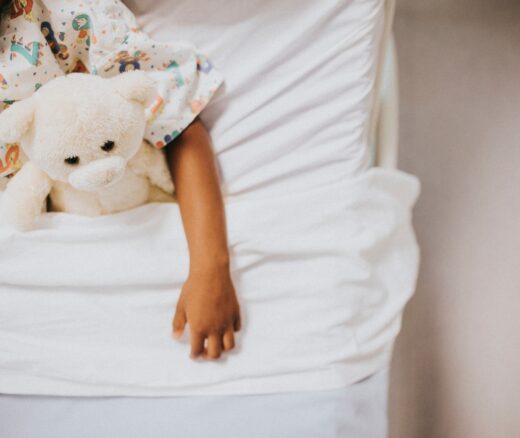
New APHA Book Warns Social Systems Are Driving Deepening Health Inequities
Penn LDI’s Antonia Villarruel and 10 Other Authors Map Social Determinants Across Multiple Racial and Ethnic Groups
Blog Post
In June, U.S. Surgeon General Vivek Murthy, MD, MBA, issued a landmark Surgeon General’s Advisory declaring firearm violence in America to be a public health crisis. At the top of its list of recommendations, the report highlights a need for national data that includes all nonfatal firearm injuries: “Without proper data,” it states, “the extent and severity of firearm violence outcomes as well as evaluations of prevention efforts and interventions will be limited.”
The results of a new study from LDI Senior Fellows Elinore Kaufman and Kit Delgado aim to provide exactly such insights by combining health care data–which now for the first time includes race categories–with death certificate data to provide a comprehensive picture of nonfatal firearm injuries.
For every firearm death, more than twice as many people survive, often with significant physical and mental health consequences. Understanding how these injuries are distributed across different groups is essential to designing prevention interventions. And looking at both fatal and nonfatal injuries is also critical to understanding whether there are disparities among those whose injuries become fatal.
Traditionally, the Centers for Disease Control and Prevention (CDC) has estimated nonfatal injury based on a sample from 100 emergency departments (EDs) across the county, and this small sample leaves room for substantial inaccuracies. The researchers aimed to develop a more comprehensive approach by using the largest all-payer, national data set of acute care encounters combined with CDC death data to generate an estimate of the national incidence of total firearm injuries in various racial and ethnic groups.
The investigators found more than 250,000 firearm-related injuries in 2019 to 2020, about one-third of which resulted in death. Injuries due to self-harm were most likely to be fatal. Rates of self-harm were highest among white people, while rates of assault and unintentional injuries were highest among Black people. Native American people had the highest rates of fatality for assault and law enforcement–associated injury. The analysis found Black individuals experienced fatal and nonfatal firearm assaults both at a rate twenty-fold higher than white individuals. Consistent with other research, the group found alarmingly high rates among Black boys and men aged 15 to 34 years, with an overall rate of 291 firearm assault injuries per 100,000, making firearm assault injuries more common in this group than ED visits for sports injuries in any age group.
The rate at which shootings are fatal, known as the case-fatality-rate (CFR), was higher in rural areas, which the authors note may be related to differences in weapon type, shooter skill and intentionality, and limited access to trauma care. While prior research has long rising rates of firearm suicide among Native American individuals, this study shows that elevated CFRs contributes to that trend.
The study’s findings are in line with other research suggesting that unintentional injuries, including those involving children, have increased during the pandemic years. This has heightened the need for policy and programs focused on reducing that risk such as secure storage campaigns and child access prevention laws. But the authors point out that evaluation is challenging without access to comprehensive data of fatal and nonfatal firearm injuries. Additionally, discerning intentional versus unintentional injury is difficult when using health care administrative data; past studies have found that more than one-quarter of assaults were inaccurately coded as unintentional injuries.
The authors endorse calls for changes in the International Classification of Diseases (ICD) coding practices that would make health care data related to firearm injury more reliable. They also recommend the CDC and Healthcare Cost and Utilization Project collaborate to generate a dashboard that can be queried using the datasets used in the study. They highlight recent CDC pilot grants that involve real-time, active surveillance of ED visits to identify firearm injury as a potentially important tool in creating the real-time, reliable data that is needed to address the public health challenge.
The study, “Fatal and Nonfatal Firearm Injury Rates by Race and Ethnicity in the United States, 2019 to 2020,” was published on July 30, 2024 in the Annals of Internal Medicine. Authors include Elinore J. Kaufman, Jamie Song, Ruiying Xiong, Mark J. Seamon, and M. Kit Delgado.


Penn LDI’s Antonia Villarruel and 10 Other Authors Map Social Determinants Across Multiple Racial and Ethnic Groups

A New Study of a Sample of Facilities Found Half Without Any Behavioral Health Staff

Physicians Were Paid About 10% Less for Visits Involving Black and Hispanic Patients, With Pediatric Gaps Reaching 15%, According to a First-of-Its-Kind LDI Analysis

New Study From LDI and MD Anderson Finds That Black and Low-Income, Dually Eligible Medicare Patients Are Among the Most Neglected in Cancer Care

Equitably Improving Care for Hospitalized Kids Who Experience Cardiac Arrest Requires Hospital-Level Changes, LDI Fellows Say

Billing Codes That Flag Food, Job, or Housing Insecurity in Medical Records are Underused for the Sickest Medicare Patients